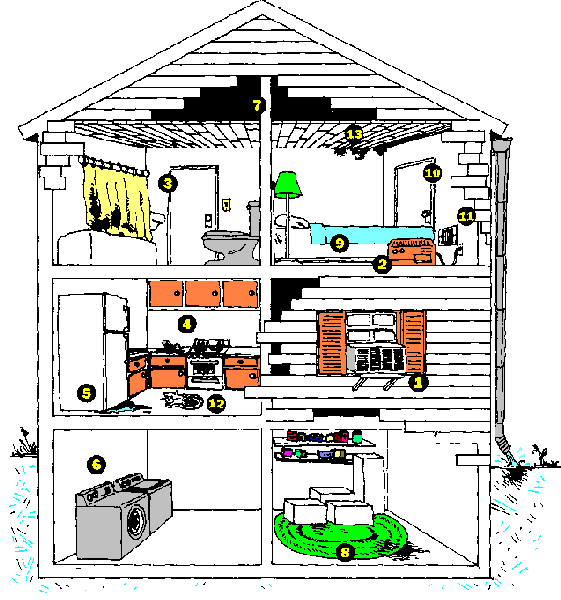


Air-conditioning units
Basements, attics, and crawlspaces
Bathrooms
Carpets
Heating and air-conditioning ducts
Humidifiers and dehumidifiers
Refrigerator drip pans

| 1. Dirty air conditioners 2. Dirty humidifiers and/or dehumidifiers 3. Bathroom without vents or windows 4. Kitchen without vents or windows 5. Dirty refrigerator drip pans 6. Laundry room with unvented dryer 7. Unventilated attic |
8. Carpet on damp basement floor 9. Bedding 10. Closet on outside wall 11. Dirty heating/air conditioning system 12. Dogs or cats 13. Water damage (around windows, the roof or the basement) |
